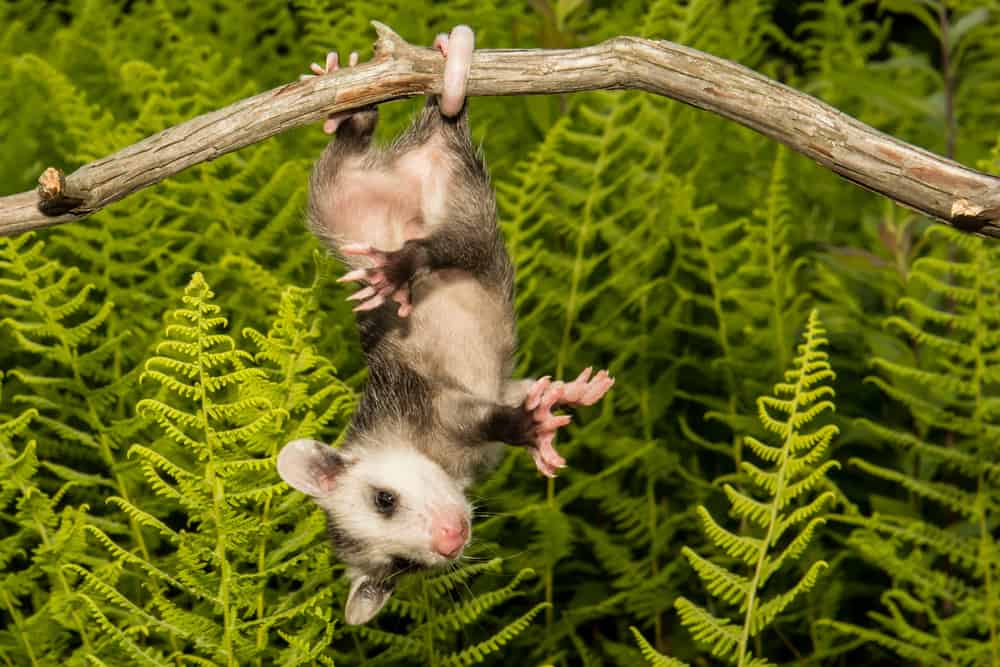You probably think bears hibernate all winter, toads give you warts, and sharks can smell a drop of blood miles away. If that’s the case, it’s a good thing you stumbled upon this helpful article debunking the top animal myths you probably learned over the years. Do you think beavers somehow help in making vanilla? Please keep reading to decipher the facts about animals from the fiction. Sure, these animal myths might have a partial truth to them, so it is that much more important to understand these wild animal myths for what they are! Keep reading to discover the truth about your favorite animals.
23. Opossums Don’t Hang by Their Tails.

Opossums, sometimes just called possums, are marsupials that we love to hate. If you live in an area that is prone to possum infestations, you probably know that you need to make sure the lids on your trash cans are secured tightly to keep them from foraging through last night’s dinner scraps. However, they are also beneficial creatures who eat other pests that can cause even bigger problems. Oh, and another fun fact about possums? In Australia, opossums and possums actually refer to two different animals! Furthermore, they really do play dead; that feature is most certainly not a myth! Nevertheless, they have no control over when they do; playing dead is an automatic defense that kicks in when they become terrified (via National Geographic).
Many people believe that possums hang by their tails but chalk this one up to one of the many animal myths (via Mental Floss). They sometimes use their tails to swing from branches as a way of helping them climb, but they aren’t hanging there. Sometimes baby possums hang by their tails for just a few seconds at a time, but once they are full-grown, they are simply too large for their tails to support their weight (via Ranker). There is no survival or defense mechanism involved here, only a myth. One feature that is not full of myths is that they are immune to snake venom, except for the poison of coral snakes. They routinely eat snakes, and the ticks that carry Lyme disease, plus they don’t get rabies! Possums aren’t so awful after all.
